Afrikakorps Heer NCO/EM's Visored Field Cap without Soutache
CATEGORY: Version
SKU: 23.GOR.01.01.01.01.02.003.000
Estimated market value:

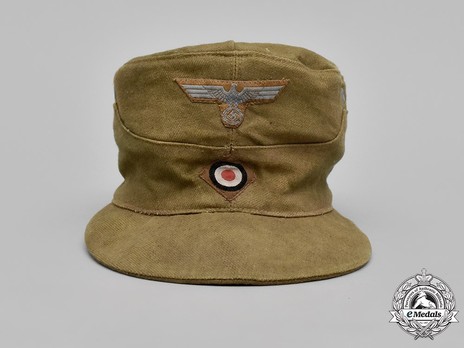


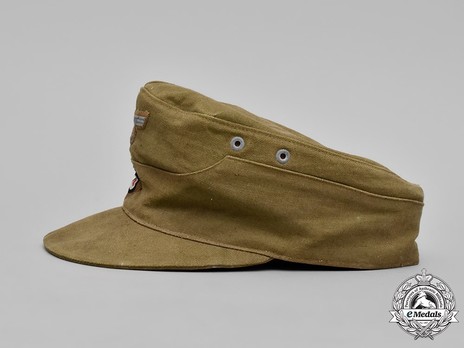
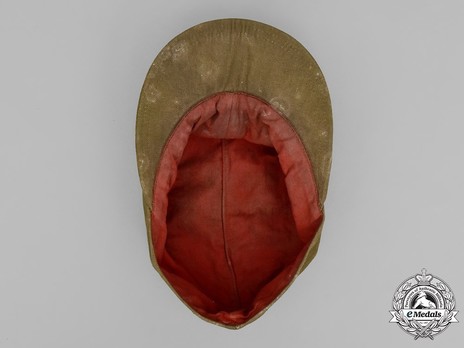

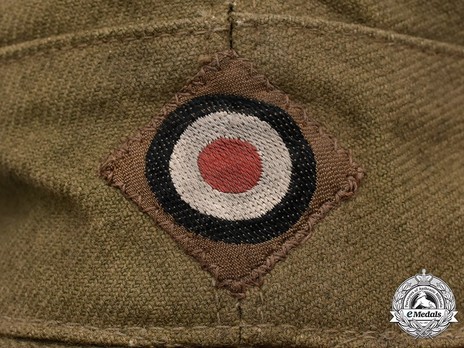
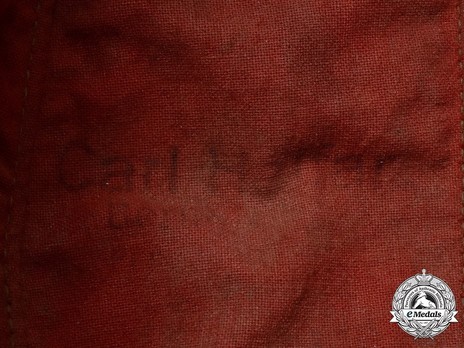
Estimated market value:
A tropical field cap constructed of an olive-green cotton, with a machine-embroidered tropical eagle in grey on a brown backing stitched in place over the crown, with a machine-embroidered national tri-colour cockade on a brown backing sewn on the front band, a stiffened visor, two silvered zink ventilation eyelets on either side, the interior lined in red cotton, no sweatband, stamped with maker’s mark for Carl Halfar of Berlin in black ink, measuring 150 mm (w) x 270 mm (l) x 100 mm (h), exterior shows minimal markings, the visor has lost some stiffness, and the interior is moderately soiled, and overall in near extremely fine condition.
During the Second World War, German troops stationed in northern Africa are generally referred to as the Afrikakorps. Technically, this is not entirely correct, since some German units operating in Africa were not actually part of the DAK (Deutsches Afrikakorps), and some units of it were, in fact, Italian ones. However, for the purpose of collecting so-called “tropical” uniforms and insignia, collectors have simplified the meaning of the term.
The first German troops were sent to northern Africa in February of 1941, to support their Italian allies against the British. The climate of the African continent made it necessary to wear specialised uniforms and gear that not only supported the soldiers in serving in a hot and arid environment, but also helped them in blending in with the landscape, which, in general, presented itself as brown, olive, khaki, or sand/tan in colour. Worn over long periods of time under the blistering desert sun, some uniforms were eventually bleached to white or off-white. Uniforms and insignia in these colours are often referred to as “tropical”, and it is worth noting that they weren’t just worn by members of units stationed in Africa, but in the entire Mediterranean theatre of war, including southern France, Italy, the Balkans, and Greece, as well as in southern Russia during the summer months. Tropical uniforms were worn by members of all three branches of the Wehrmacht: the Heer (army), the Kriegsmarine (navy), and the Luftwaffe (air force). Members of the Waffen-SS stationed in southerly regions also wore tropical-style uniforms, and even though they technically have no connection to the DAK, all tropical uniforms and insignia of all branches of the German military are listed here.
The Afrikakorps visored field cap is known as the “Drillichfeldmütze”, to go with the “Drillich” uniform that was worn in warm or tropical weather. It was officially introduced in 1941 and thus can be seen as a precursor to the M43 visored field cap. Officers wore aluminum piping, while generals wore gilt piping. The same colours were used for the insignia of upper ranks. Initially, the cap had a soutache in the branch colour of the wearer (except for generals who wore a gilt soutache). This was discontinued on September 8, 1942.
The cap was made of herringbone twill, initially composed of linen, but quickly changed to rayon or synthetic cotton. The design is simplified, compared to the more elaborate M43 visored field cap. The tropical cap has no front buttons and no ear flaps. However, a seam gives the impression of flaps that are permanently affixed to the sides.
The embroidered insignia, the red, white, and black cockade in a wreath of oak leaves and the national eagle above it, usually came on a one-piece trapezium. It was made with silver-coloured wire for officer ranks.

Comments
Sign in to comment and reply.


Scroll Top